It's been a particularly unproductive week thanks to the double-whammy of Tales of Xillia (now complete!) and the SGDQ streams, but it looks like the weeks ahead are going to be a lot lighter on material to passively watch (unless you're into the Olympics, I guess). It's the best time to be catching up with backlog games, then, and I'm fully intending to finally start playing some Stardew Valley and Metal Gear Solid V for the rest of this month. Still got a while until No Man's Sky shows up, after all.
This has also been emphasizing an unforeseen problem with my weekly content output though: with all these long games, I generally end up with just enough material to fill these Sunday rundowns (man, that's a way better title...) in lieu of anything more detailed and focused that would work as a standalone piece. Sunday Summaries was, of course, created to ensure that I was writing something every week, but it's also been siphoning away a lot of observations I could've been using for comprehensive blogs and reviews on individual games. Still, despite all that, I'm overall satisfied with what I've been able to do with the feature. It's like my own 'zine, almost. Or a weblog, I suppose would be the more technically apt comparison.
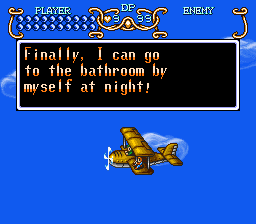
Anyway, back to SGDQ. I stand by my list of games to watch out for that I put together shortly before the streams began, and while I wasn't fortunate enough to catch all of them live (the obscure stuff tends to get relegated to the wee hours of the morning) I've been much more entertained in general by the games that have debuted speedruns this year than the old recurring favorites, simply because the former group offers something new to see. You want to check out the speedruns for the mainstream mainstays, of course, since there's a huge community for those games and that means a whole lot of little glitches and frame-perfect jumps and other time-saving tricks that have taken many streamers many months to find, but I'm still happy to come across an Indie game I've never seen before like Boson X or Momodora: Reverie Under the Moonlight, or one of those games from my youth I was fairly convinced everyone else had forgotten about, like Bubble Ghost or Skyblazer. When you start perusing the archives for last week's antics, I'd recommend hitting all the big stops (the amazing races and the wonderful Tetris The Grand Master, TASBot and Super Mario Maker blocks) and then looking up some of the streams for games you've never heard of. It would make for an elucidating journey. (Also, since it was a last second addition and thus I wasn't able to add it on the aforementioned list, that Illusion of Gaia run was a great watch. Such a wonderfully odd and underrated action-RPG, and one that has aged better than most even with its occasionally off localization.)
New Games!
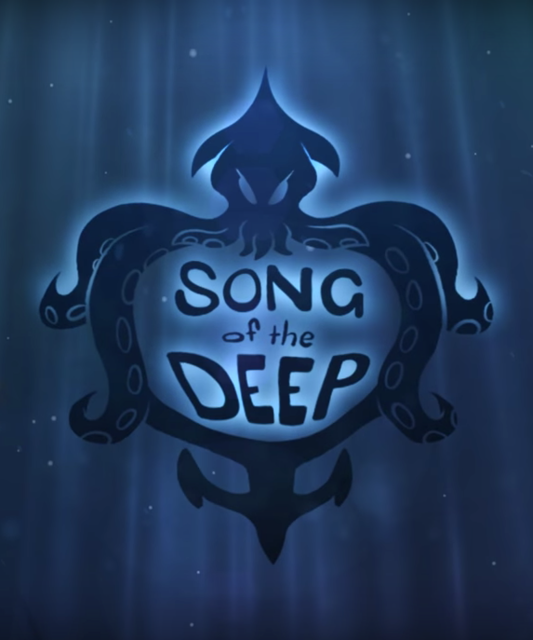
Both I and a thousand GameStop employees, if only because they no longer have to shill preorders, are looking forward to the release of Song of the South Deep this week. From early reports it looks like a decent enough Indie SpaceWhipper with an aquatic theme, probably not too dissimilar from Derek Yu's Aquaria, and developed by a small team with a pedigree from within Insomniac. What's odd is that it looks and is priced like the sort of game you'd regularly see on digital distribution networks and nowhere else, so why it got associated with a struggling brick-and-mortar store chain is anyone's guess. While GameStop is selling folk physical copies of the game, it seems like they'd just as well distributing little leaflets with codes written on them. (It'd actually be kind of cool if future GameStops became little newspaper stand kiosks with rows of Steam/PSN/XBL keys for sale.)
A significant release for a certain small but growing western audience is the new MonHun game, Monster Hunter Generations, which sounds to me like a "best of" of the various enormous hunter's marks from previous games. While it initially struck me as sort of a weak idea, like a TV show that does an episode full of clips from earlier seasons because someone got amnesia (or ran out of production budget, for that matter), it struck me that it's actually a savvy idea: Monster Hunter has been a notoriously slow burn over here, rather than the subgenre-pioneering juggernaut it is in Japan, and there's still a steady trickle of new players discovering its modest charms. By creating a compilation game that's all (monster) killer no filler, it gives that burgeoning audience a tentpole gateway release with which to catch up on all the highlights of the series without the amount of endless grinding playing each of those previous games individually would require. There's also the fact that, similar to another recent compilation release Rhythm Heaven Megamix, there'll be monsters from games that never saw localized releases and will thus be new to a western audience. The game wasn't built specifically with its western audience in mind - rather, it's meant to celebrate ten years of Monster Hunter by combining elements both old and new - but it might serve as an effective jumping off point for its Occidental fans.
In other game release news, we have: Vinny Astronaut Killing Simulator coming to PS4; the JRPG sequel 7th Dragon III Code: VFD being released on 3DS days before Monster Hunter, so good luck with that; the licensed game of the new distaff Ghostbusters movie which I'm hoping won't lead to quite as much Twitter drama; Tim Rogers's manic multiplayer game Videoball; unexpected (and unexpectedly neat) Kinect platformer Fru; Harebrained Schemes's promising dungeon-crawler Necropolis; and a new Gundam game for Vita named Mobile Suit Gundam Extreme VS-Force which, with Austin's absence, will probably not see much coverage on Giant Bomb. Truly he has left us with a mecha-shaped hole in our hearts.
Wiki!
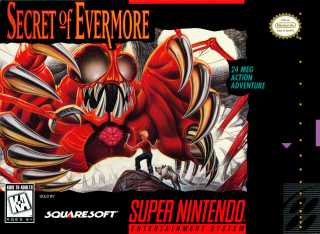
First half of the week was dedicated to playing Tales of Xillia while listening to the podcast, since those field overworld areas can be fairly big without a whole lot of story going on, but I managed to squeeze in a bit of the Super Nintendo's October 1995 library while listening to the Beastcast a couple days after Xillia had been completed. Specifically, I checked up on the seven games that premiered in North America during that month, of the October '95's overall total of thirty releases. Having looked ahead at October's schedule, while it's not one of the system's busiest months, it might be one of its overall best in terms of quality games. Even the licensed dreck-heavy US-exclusives were a fairly decent bunch this time around.
Since there's only seven, let's quickly go through every one of them:
- Secret of Evermore is the stand-out: a Square-financed RPG created entirely by western developers for a western audience that was also the first game to be scored by the inimitable Jeremy Soule, better known these days for his atmospheric exploration music in Bethesda games. Even back then, Soule's talent for the ambient and the ethereal was on full display, giving Secret of Evermore an emotional soul (as it were) that was often at odds with its silly B-movie aspirations. Inspired significantly by Secret of Mana both mechanically and visually, the game had its occasional pacing and script problems but was otherwise a fantastic and promising first effort from a new studio. It's a shame "Square USA" would never get the chance to follow it up.
- MechWarrior 3050 put off series purists with its third-person Desert Strike isometric perspective in lieu of the traditional first-person view, but it was perhaps a better fit for the consoles. Players configured their own mechs and went out on missions, strafing around enemy vehicles as best as their big stompy bipedal robot suits could manage.
- NBA Live 96 is yet another game in EA Sports's annual basketball franchise, but it was the first to get "improved" versions for next generation systems, meaning PlayStation and PC. These improvements didn't exactly pan out the way anyone would've hoped - having a variable "virtual stadium" camera to replace the usual fixed isometric view wasn't as effective as it sounds - but it's one of those cases in a long series of them where sports games for newer console generations tend to get all the attention while the older systems saw little more than basic gameplay tweaks and roster updates.
- The licensed platformer Porky Pig's Haunted Holiday is about as riveting as it sounds, but it's still unique for being the sole Looney Tunes game where franchise straight man (or pig) Porky Pig takes the starring role. A lot of effort went into animating the stammering porker, but that also means it has this offputting "off-model" affect.
- Mortal Kombat 3 requires no introduction, though it wouldn't take long for it to be supplanted by Ultimate Mortal Kombat 3, which corrected the grievous error of leaving out Scorpion as well as adding a lot more content besides.
- Tecmo Super Bowl III: Final Edition stays true to its name, being the last hurrah for Tecmo's once legendary football series. It still looks and plays like its famous NES forebear, for better or worse.
- Todd McFarlane's Spawn: The Video Game would be an easy game to mock for a number of reasons, but its actually a good-looking brawler-platformer superhero game. You sort of have to deal with the fact that it's Spawn and that it tends to be a bit on the generic side, but it's certainly not the worst superhero licensed game for the platform. It's definitely not the worst Spawn game either.
Unless I get too distracted by pixellated farming over the next week, I hope to make some significant progress through October '95's surprisingly solid Super Famicom release schedule. This is really just the tip of the iceberg.
Tales of Xillia
So now we have our third and final round-up of Tales of Xillia. I've been slowly exhausting all the mechanics and features of the game I admired - always my favorite aspect of game design, though also its most visible - but it turns out I've still got plenty left to gab on about. Here's a brief smattering of stuff I missed last time:
- The game has an unusual quick-save system in that it won't let you access multiple slots, but apparently works anywhere and stays around even after reloading. The game has regular save points as well, making it an even more unusual feature. Generally speaking, if an RPG still has fixed points where you can save, they're there for gameplay balance reasons. However, modern RPGs let players save anywhere for the convenience of it - we don't all have an endless amount of free time to fritter away on silly anime adventures, and sometimes we need to save and quit the game wherever we happen to be standing for any number of real-life issues that might pop up. Allowing folk to quick save before every battle just in case might eliminate some of the challenge, but I'd say it was a necessary evil for the sake of player convenience. Xillia seems split on it, giving us a very fair quick save system that has almost but not all the benefits of the regular save points (which include a HP/TP near refill and the ability to save across multiple slots). Definitely an example of the changes in the wind for JRPGs in 2011 and after in terms of traditional console-style game progress saving.
- Even with the added boon of being allowed to save anywhere, Xillia isn't short of ways that it manages to be both a more convenient and easier game in the series compared to its forebears, and nothing makes that more evident than the surprisingly well-hidden "auto-items" feature. This feature, similar to the AI "Gambits" of Final Fantasy XII, allows the player to set a bunch of contextual AI commands for using items. These tend to involve using health items when a character's health drops below a percentage threshold, using resurrection items whenever someone falls or using curative items whenever someone gets hit with a particular status effect. It's a surprisingly sophsticated system, though, giving you a lot of very specific contextual scenarios for some of the more powerful items like determining how many characters in your party are at a certain HP/TP percentage before you use items like Treats and Specifics to restore the whole party's resources. The player can also give the AI a hard limit on the number of items of that type they're allowed to use, prohibiting their if their number drops to a specific amount. Given that the player can only carry 15 of every consumable item (a limit that has existed in the Tales series close to its inception for balance purposes), ensuring that your party doesn't burn through all your TP-restoration items before a boss makes it a useful restriction to put in place.
- An aspect of the game that doesn't get enough attention are the character-specific link and personal skills. Every character has an assortment of "artes", the name for special attacks and spells, and they all fight in a different way. However, they're separated even further by unique talents that they offer as either the player-controlled character or AI companion in a link. Jude, for example, has a technique that allows him to suddenly appear behind an enemy after back-stepping away from an attack, while in a link he can heal and pull you back to your feet if you happen to get knocked over by an enemy. Each of the six characters' linked skills are associated with a specific enemy type: Milla can trap fast-moving enemies, Jude helps when fighting large bruiser type enemies that knock you down a lot, Rowen's anti-magic shields help considerably against foes that cast a lot of magic, Alvin can break the guards of defensive enemies who block a lot, Elize can drain foes and give that health and TP to the player while Leia can steal items from any enemy that gets knocked down, and is best linked to when fighting certain strange foes with valuable items to purloin. The personal skills, meanwhile, help distinguish each character from their combat archetype - it gives Jude more maneuverability compared to hand-to-hand predecessors, Milla can change the artes she uses by tapping the associated command prompt instead of holding it down, Rowen can tweak his artes for additional effects by waving his saber like a conductor's baton, Elize can switch her doll Teepo on and off which changes how many of her skills work, Alvin can charge his weapon to produce more powerful results at the cost of leaving him briefly vulnerable while Leia can use a similar technique to Jude's back-step to increase the reach and strength of her staff weapons. They take a while to get used to, but they all offer an additional and often conditional benefit to combat.
- Finally, like my mentioning of the Bacura cameos last time, I just wanted to point out a fun thing the Tales series does that I almost always forget about until I play a new Tales game: the way the battle music changes after every chapter. It's not just a subtle remix of the previous music, but an entirely new track that tends to be a bit more dramatic and serious in order to reflect the thickening plot and more resolute heroes.
Now I'm going to talk about the story and what I appreciated about it, broadly, so be aware that there'll be a few mild spoilers in here. The plot of the game isn't its strongest suit, and rarely is with any Tales, but there was enough twists and "oh shit" moments to keep me invested.
I particularly like the way the game handles its antagonist - it's been a common thread in Tales games I've played recently that the final boss isn't so much a psychopath seeking the world's destruction for nebulous reasons, but someone who is as equally motivated to save the world as you are, but has an entirely different ideology that influences their decision as to how that might be accomplished. It creates compelling villains that you can sympathize with, even if the antagonist of this particular game can be a bit too obstinate for their own good.
One of my favorite parts of the game was the one-two punch of the Elympios reveal; a late-game event where you suddenly realize that there's another world parallel to the one the game's spent all its time in so far, which in turn is actually a fairly well-worn Tales trope at this point. Symphonia's Tethe'alla, Eternia's Celestia, Abyss's subterranean Qliphoth - the series has a habit of pulling the rug out from under the player, or perhaps more accurately the veil over their eyes, to reveal a second world that nonetheless explains a lot about how the first one functions. With Elympios, you're immediately struck by how dangerous this other world is - advanced airships pour out of a fracture in space, filled with soldiers equipped with the deadly nature-destroying "spyrix" weaponry that has been causing strife to the party up to this point. It's complete chaos and leads to an extended sequence where the party splits for a few hours as they end up being dragged by underwater marsh currents to different parts of the world map. When you actually get to visit Elympios a while later, you realize it's a world where its technology has almost depleted the world's natural resources, and its pessimistic civilians eke out a living in a dying landscape without much left in the way of plantlife or hope. Invading the world of Reize Maxia was more a move of desperation than anything else; their plan of siphoning that world's spiritual energy was purely motivated by a need to keep their own alive for a few more decades. This culture shock is best exemplified by the music in Elympios' handful of locations: instead of the typical rousing orchestral JRPG synth you've been listening to so far, it's a sort of slow jazz of the type you'd listen to on a rainy day while sipping coffee. It's a far more "mature" sound, to fit a world and populace that has left the innocence and enthusiasm of youth behind and is simply counting out the remaining days in as reflective and chill a manner as possible, collectively reaching the final stage of grief for its desolate future. At least, that's the impression I got - it could also be said that it reflects a world without magic and wonder, defined instead by scientific study and gray cosmopolitan skylines. Here's a couple of Elympios tracks to demonstrate: Trigleph's theme and one of its overworld themes. (I really gotta follow up that Hitoshi Sakimoto retrospective piece with one on Motoi Sakuraba one of these days.)
Immediately after I completed the game, I started thinking about how closely it hews thematically to FLCL - a short-lived anime series that, through surreal scenarios and some chaotic animation, depicted what it was like for a young man to hit puberty and come to terms with adulthood. Jude starts the game as a weak-willed but intelligent teenager who chooses to become a doctor seemingly because it was the family business, making his way through med school and being groomed for a position as a leading professor's medical assistant before his world crashes to a halt with the arrival of the dynamic and otherworldly Milla Maxwell. It's not quite a "Manic Pixie Dream Girl" scenario, however, as Milla's mission to save the spirits and humans of the world begins to take over Jude's life rather than the usual inverse. Still, we have a case of an adolescent male meeting a slightly older woman who bowls him over with her occasionally overbearing presence and willpower, and gets dragged along with the flow until he eventually "mans up" to the situation. At that point the woman leaves and his life returns to a state of normalcy, following the same path it did before, but he's all the better for that crazy chapter of his life. While this sounds like a Jude-centric take on Xillia's plot, the game's masterstroke is in how it provides two sides the same story (give or take a few cases where the party splits up), and while I'm saving Milla's side for a future replay I'm convinced it'll focus far more on Milla's backstory and how she eventually evolves to become something more than a pawn in a grander scheme of which she was incognizant, with Jude playing a more supportive role in her journey.
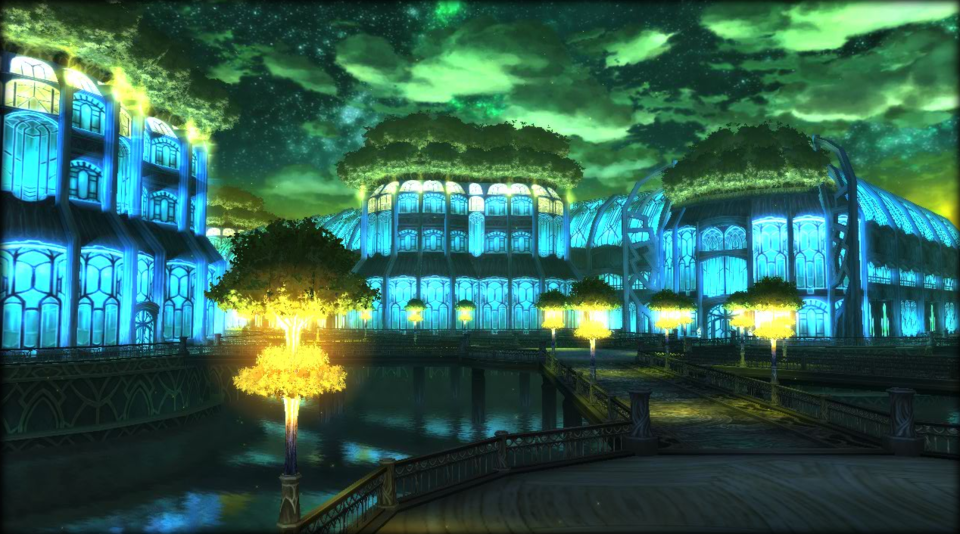
Thanks to all my New Game Plus bonuses - including a tenfold XP boost, double the item and money drops and retaining a set of absurdly overpowered late-game weapons - I imagine it'll only take a few hours compared to that long first playthrough. Still, I'm giving myself some time away regardless to let my enthusiasm for playing the game regenerate a bit. I had quite the hour count on that timer last time I checked.
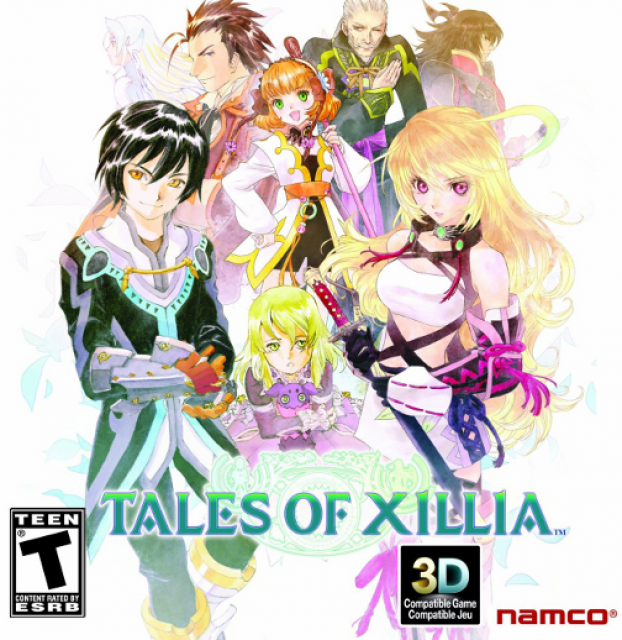
Log in to comment